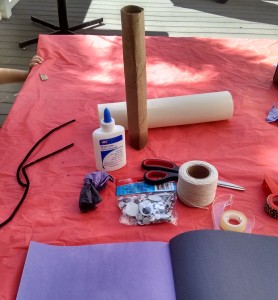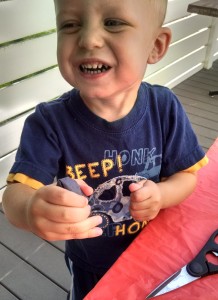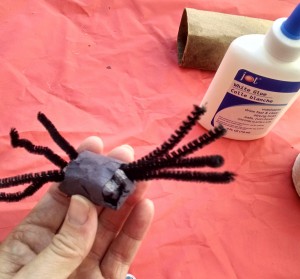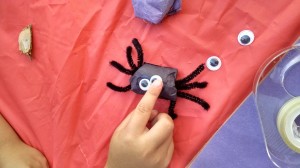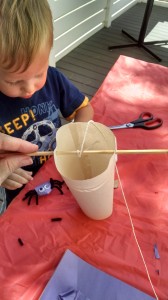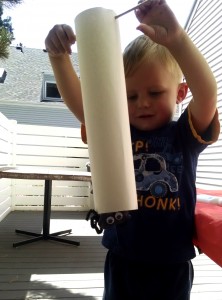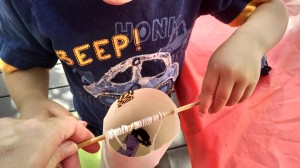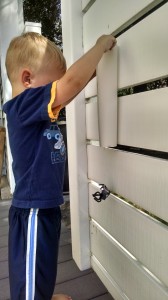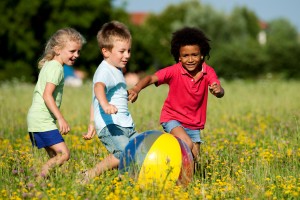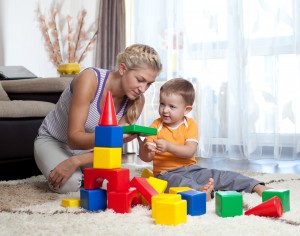Alright, we are all aware that most of us moms (or dads) have read endless FB posts, purchased tons of books, and pinned about a million pins on “ways to stay fit”. It’s also probably true that it’s the same group of us that have engaged in maybe only one or two of these ideas. (Ugh)
That’s normal you say, we are all responsible for ourselves and our bodies. But what about the kids? Are your children getting the exercise and active time that they so desperately need every day? We’ve been asking these same questions and wanted to present some solutions: 6 great fitness ideas for the family and kids. But first, here’s some really terrifying data that will only magnify your desire to raise healthy kids and become healthier yourself.
The FAT Stats
Child obesity isn’t ever a topic that’s fun to discuss, but you might be more apt to discuss it if you knew that your child had a 49% chance of being obese if he/she lives in the state of Louisiana.
 In the state of New York, child obesity rates are thirty two percent; thirty six percent if you are from Texas, and there is almost a twenty two percent chance of your child being obese if you live in the state of Utah. Why are these rates so outrageous? Well, in Utah alone the percentage of adults who are overweight is upwards of 35%. Not to mention that the percentage of adults getting absolutely no physical activity (AT ALL!) daily, is almost twenty one percent! Imagine what that means for our children.
In the state of New York, child obesity rates are thirty two percent; thirty six percent if you are from Texas, and there is almost a twenty two percent chance of your child being obese if you live in the state of Utah. Why are these rates so outrageous? Well, in Utah alone the percentage of adults who are overweight is upwards of 35%. Not to mention that the percentage of adults getting absolutely no physical activity (AT ALL!) daily, is almost twenty one percent! Imagine what that means for our children.
Children do as we do. They learn from what we do. Their lives are based around our habits, patterns and schedules right from the start. How we raise them is most likely what they will compare their lives to through the rest of it all. Are we giving them the baseline for a fighting chance at success?
Ask yourself, does your child fall into the widespread statistic of children who are watching 7 ½ hours of TV a day? OK, so maybe your children aren’t watching seven and a half hours, but are they watching more than two hours daily? If so, it sounds like you and your children could greatly benefit by reevaluating your family fitness habits.
Making Fitness Fun
We know this is a growing issue right here in our own home town, so we wanted to start a conversation about possibly making these habits easier to accomplish, more fun for the kids and family together, and more achievable with the busy day-to-day family schedule that so many of us face.
Here are 6 ways to make exercise fun and stay fit as a family. Please comment and share your own personal ideas on how this can be more achievable for mothers and fathers everywhere!
6 Ways to Make Exercise Fun & Stay Fit as a Family
1. Weekly sports night 
When kids grow up and you look around and all you see are children multiplying, it’s definitely time to try and hold some traditions. Children love traditions and families thrive on them. Start small, like a sports night once a week. This will not only bring your family a bit closer, but it will also keep your children (and hopefully yourself) more active.
I know it all sounds so cliché but these “sports nights” can be anything from a fun obstacle course that you created during the day with the younger children as a daytime activity or if your kids are all younger it can be as simple as sidewalk chalk hopscotch or tic-tac-toe. You can get a great game of baseball going with kids who are older or, if you don’t have much of an opportunity to be outside, there’s always active video games! There are no excuses here people…get moving.
2. Simon Says Stretch!
Exercise and staying active begins in the mind and it begins early-on like most habits do. Children follow examples because its human nature. What a better example to leave than taking care of your body. A fun game of Simon Says Stretch can not only become a great time with the kids but it teaches the importance of stretching and staying limber. A limber body will bounce back well before a stiff one.
3. Nightly walks
Getting outside in the early evening with the family can be an awesome way to stay fit together. Imagine, dinner is done, the table is cleared and bellies are full. Instead of allowing your children to slump to the TV for their nightly shows, set aside a week night where they are expecting to get active with the family. Going for a walk is great after a nice well cooked (and eaten) meal.
You can make it fun as well! Go geocaching with the young ones or go on an evening hike with the older kids. This will also help them have a great appreciation for the outdoors the rest of their long healthy lives.
4. Walk instead of ride 
You can also help your young ones get on their feet early by simply giving them the exercise they need during your everyday activities. For example, at the grocery store, let them walk! Many stores now have mini carts for just these reasons so take advantage of them.
Remember, you are still in charge, if things get out of hand, put them in the cart. But it also helps to simply talk with them before you go to the store and make sure they are expecting the rules and for them to be enforced. Kids need and enjoy boundaries…but if you give them some freedom, they might surprise you.
5. Dance parties 
It’s the simple things that can make the sweetest memories. On those particularly stressful days when you are about to pull your hair out because the house is a mess, your kids are out of control, your laundry still isn’t done and its almost four thirty in the afternoon, just dance. Turn up the music and let it all go.
Take ten minutes to dance like you have never danced before and shake off all that stress! Watch your kids when you do this, you might find that your little ones will want to be close to you and they will suddenly want to obey you because they love you. And boy is it great to watch them dance!
6. Get in the garden 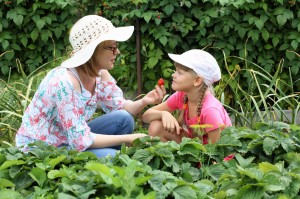
Gardening can almost be considered a long forgotten art. But if you have a yard and places to garden this might be one of the BEST ways to get your kids and yourself moving.
While they are really young, let them dig in the dirt and play next to you as you garden. As they get a little older (even preschool age) begin to talk to them about what you are doing and allow them to help you. You will be surprised at how interested they can become and how much of a regular exercise this can be together.
There are so many ways that you can make sure your children are staying fit while you stay fit with them. Like anything, it takes you making those efforts in making sure these things happen and that traditions take root.
Like mentioned before, the activities can change as children get older but if you start with them while they are young, the chances of them having a desire to keep it up and to lead an active lifestyle are much greater. What do you do to keep your family active?




